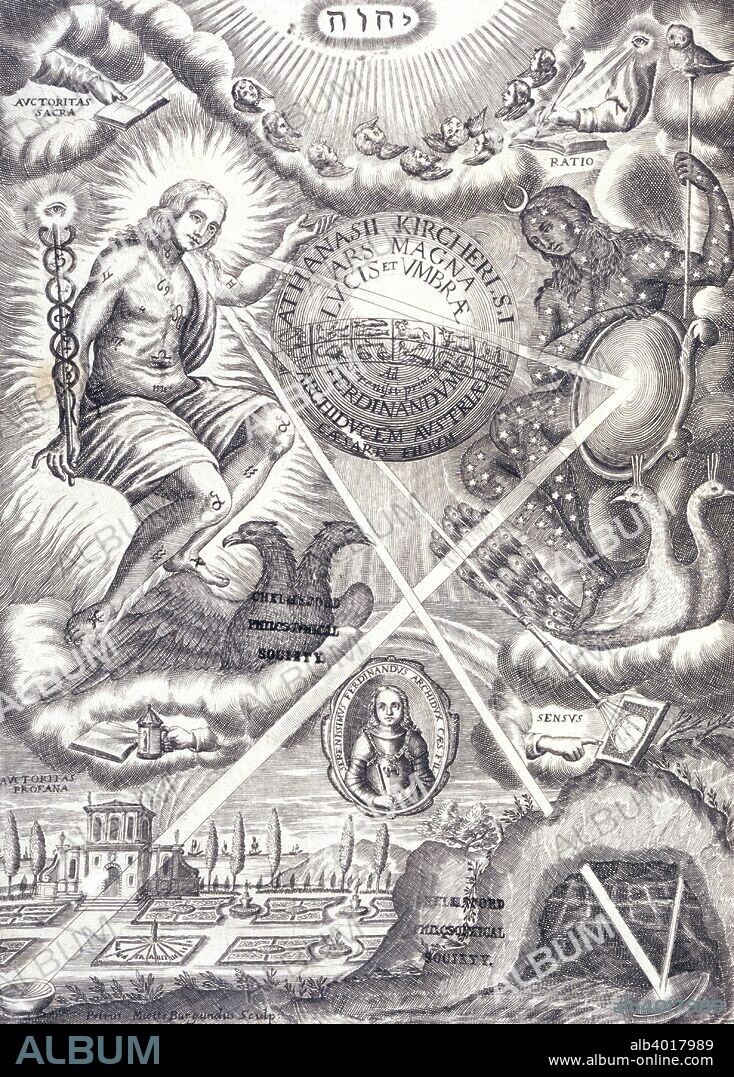alb4017989
Frontispiece from Athanasius Kircher's Ars Magna Lucis Et Umbrae. Artist: Unknown

|
Zu einem anderen Lightbox hinzufügen |
|
Zu einem anderen Lightbox hinzufügen |



Haben Sie bereits ein Konto? Anmelden
Sie haben kein Konto? Registrieren
Dieses Bild kaufen.
Nutzung auswählen:

Titel:
Frontispiece from Athanasius Kircher's Ars Magna Lucis Et Umbrae. Artist: Unknown
Untertitel:
Siehe automatische Übersetzung
Frontispiece from Athanasius Kircher's Ars Magna Lucis Et Umbrae. To the left is a woman as the personification of the sun, with the symbols of the zodiac covering her body. To the right is a woman as a personification of the moon covered in stars. Below her sits two peacocks. Rays of light hit various lenses which reflects Kircher's discoveries. Kircher demonstrated that by placing a lens between a screen and a mirror which had been written on, a sharp but inverted image of the text would appear on the screen. By using a spherical water-filled flask as a condenser to concentrate the light, Kircher found that texts painted on the mirror's surface could be projected by light from a candle after dark. These demonstrations eventually resulted in the birth of the magic lantern. Ars Magna Lucis Et Umbrae was published in 1646.
Bildnachweis:
Album / Oxford Science Archive / Heritage Images
Freigaben (Releases):
Model: Nein - Eigentum: Nein
Rechtefragen?
Rechtefragen?
Bildgröße:
3174 x 4430 px | 40.2 MB
Druckgröße:
26.9 x 37.5 cm | 10.6 x 14.8 in (300 dpi)
Schlüsselwörter:
 Pinterest
Pinterest Twitter
Twitter Facebook
Facebook Link kopieren
Link kopieren Email
Email
